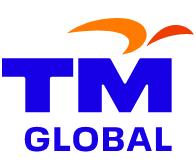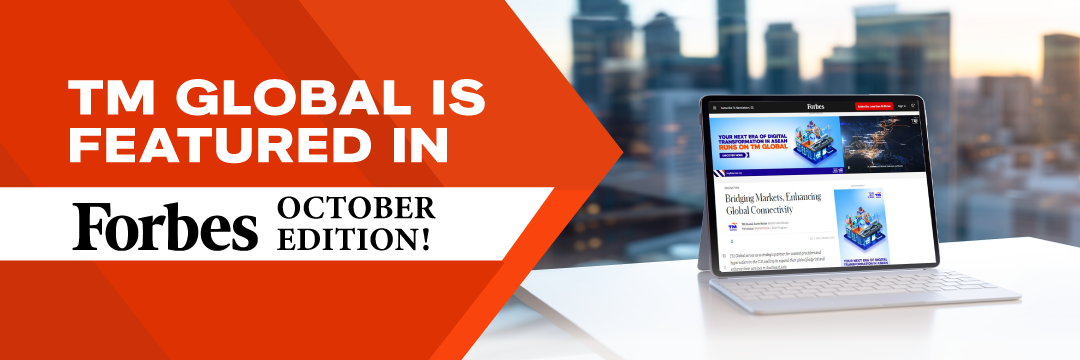TM Global serves as a strategic partner for content providers and hyperscalers in the U.S. seeking to expand their global footprint and enhance their services in Southeast Asia.
With a population of over 600 million and a rising middle class, Southeast Asia holds tremendous opportunities for content providers, hyperscalers and other digital players. About 70-80% of the region’s adult population are Internet users, while 50-60% regularly purchase digital products and services.

The digital economy in Southeast Asia is steadily growing and projected to reach US$1 trillion by 2030. The online media market, which includes video-on-demand services, online gaming, advertising and music streaming platforms, is expected to hit US$34 billion by the end of 2025.
To capitalize on the immense growth opportunities in the region, content providers such as music and video streaming platforms, gaming companies and hyperscalers— businesses that require large-scale data centers and cloud infrastructure — are partnering telecommunications and technology companies to expand their market reach into this highly competitive region.
A Strategic Partner For Growth
Headquartered in Kuala Lumpur, TM Global, the domestic and international wholesale business arm of TM, is an infrastructure-based business that delivers cutting-edge connectivity and digital solutions, leveraging its extensive global connectivity and network infrastructure.
TM Global has regional offices in key locations worldwide, catering to the needs of organizations in major centers, including the U.S. (TMUS). This is among TM Global’s six regional offices that includes Singapore, Hong Kong, Dubai, Australia and UK.
TMUS established its first U.S. office in Washington D.C. in 2000. In 2014, it strategically expanded closer to the Silicon Valley by opening an office in San Francisco. This move provided opportunities for TM Global to work closely with leading hyperscalers, tech partners and over-the-top (OTT) players who are expanding their presence and services into Southeast Asia.
TMUS delivers a comprehensive range of solutions from connectivity to content delivery, and platform services. It also provides hosting services via its six data centers in Malaysia and one in Hong Kong, positioning its facilities as carrier-neutral and highly reliable hubs. These data centers are supported by TM Global’s extensive global submarine cable systems spanning over 340,000km (211,266 miles), connecting Southeast Asia to greater Asia, the Middle East, Europe and the U.S.
“Our expansive network and extensive range of platform solutions uniquely position us to empower U.S. businesses seeking to capitalize on the burgeoning market opportunities in Southeast Asia. We aim to become the preferred partner for global digital infrastructure projects, providing seamless connectivity between the two regions,” says Khairul Liza Ibrahim, Executive Vice President of TM Global.

Most recently, TM Global partnered Nxera, another leading telecommunications provider in the Southeast Asia region, to develop an advanced, AI-ready data center in Johor, Malaysia. This joint, hyperconnected data center will drive development of the region’s digital ecosystem, enabling real-time information sharing that will benefit businesses of all sizes, while nurturing future digital talents.
Challenges in Data Hosting
When it comes to delivering seamless, low-latency content, hyperscalers and content providers must decide on their data hosting strategy. Typically, there are two options: setting up data centers in the targeted region, which is a capital-intensive model, or adopting an operating expenditure model by partnering with a strategic partner in that region.
Should they opt to set up their own data centers, there are several challenges that may arise. It is important to secure a reliable and uninterrupted power supply, to ensure continuous operation and data safety. This requires robust infrastructure and often backup systems to mitigate power outages. Finding the right location and obtaining approvals from local authorities can also be challenging, which may delay timelines.
Another key challenge they could face is retaining talent. While Southeast Asia boasts a highly skilled workforce, the competition for top talent is fierce. Key stakeholders, including governments and private sectors, are continuously working to grow digital talent pools.
Considering these challenges and the demands to scale quickly, partnering with established telecommunications companies such as TM Global is often a more viable option in entering this dynamic region.

Enhancing Customer Experience
Engaging a strategic telecommunications partner can help content providers and hyperscalers deliver low-latency, high-bandwidth content and reduce data bottlenecks to enhance user experience. TM Global’s Edge services efficiently address these challenges, enabling content providers to bring their content closer to end users and processing data closer to its source, thereby ensuring high-quality digital experiences.
U.S. enterprises can also take advantage of TM Global’s Platform-as-a-Service (“PaaS”) solutions, infrastructure and support to provide seamless content distribution across Southeast Asia. To better serve the entertainment and gaming industries, TM Global has expanded its TMUS operations to Los Angeles and Las Vegas, strategically positioning its offices closer to these key markets.
“The opening of two new offices in Los Angeles and Las Vegas demonstrates our dedication to provide best-in-class solutions and services to content providers and hyperscalers in that dynamic market. While our commitment to enhance connectivity infrastructure remains unwavering, we are also driving value for our stakeholders through continuous innovation to better serve the entertainment and gaming industries,” Khairul Liza explains.
To date, TM Global works with more than 160 partners world-wide. This is a testament of its commitment to excellence and dedication to delivering innovative and sustainable solutions, marking a pivotal step in TM’s aspiration to become a Digital Powerhouse by 2030.
This article was first published in Forbes Magazine, October 1, 2024








